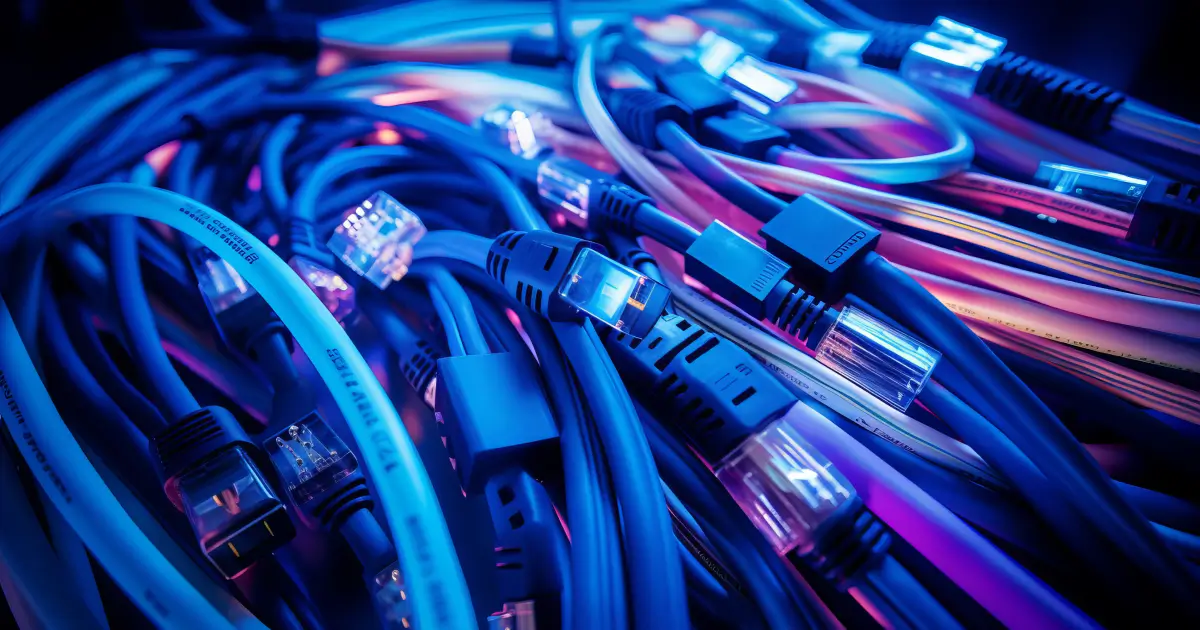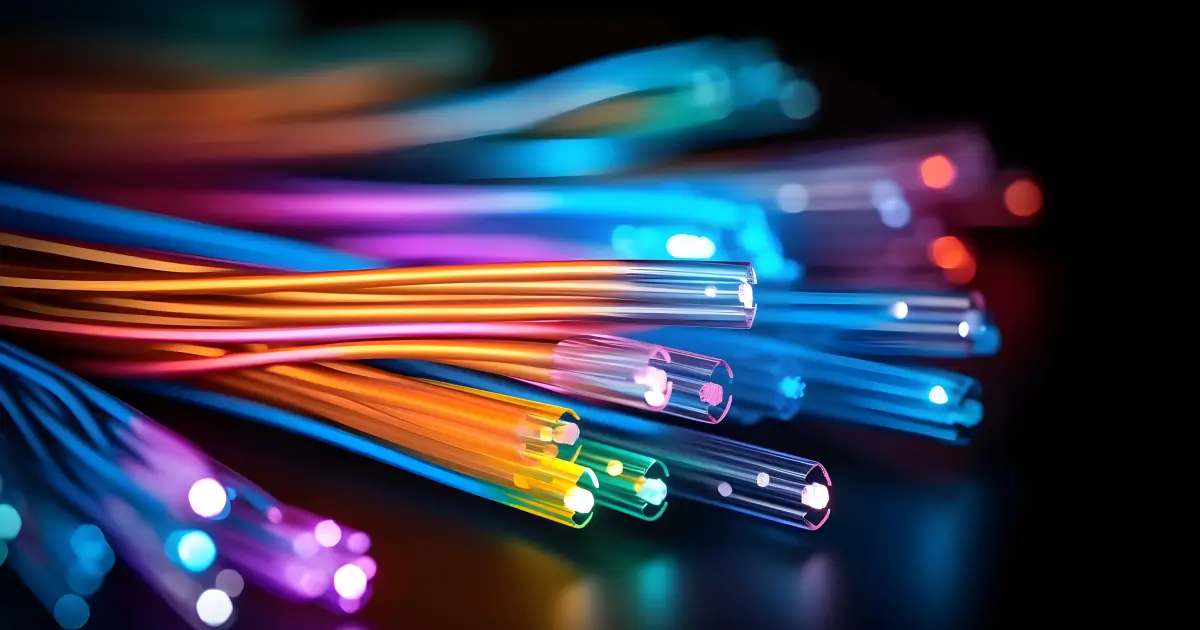Choosing the right internet connection type is crucial. While there are three common options available in the market, each has its own set of pros and cons that can significantly impact your online experience. In this blog post, we’ll explore the differences between DSL, cable, and fiber internet connections, how to identify what you have, the various types of fiber optic cables, and whether DSL can work with fiber. Our aim is to empower you with the knowledge in order to make an informed decision about your internet connection.
Table of contents

What is the Difference Between DSL, Cable, and Fiber Internet?
Let’s start by understanding the basics of each internet connection type:
DSL (Digital Subscriber Line):
DSL internet operates over traditional telephone lines. It uses a frequency range that allows data to be transmitted while voice calls are simultaneously made over the same line.
Cable Internet:
Cable internet uses the same coaxial cable infrastructure as cable television. It’s known for its high-speed capabilities and is delivered by your local cable TV provider.
Fiber Internet:
Fiber-optic internet uses ultra-thin strands of glass or plastic to transmit data as pulses of light. It’s the fastest and most reliable internet connection available.

DSL vs. Cable vs. Fiber: A Comparative Analysis
Let’s break down the pros and cons of each internet connection type:
DSL Internet
Pros:
1. Widely Available: DSL is available in many areas, including rural regions.
2. Budget-Friendly: It’s often more affordable than cable or fiber.
3. Stable Connection: DSL generally provides a stable connection suitable for standard online activities.
Cons:
1. Speed Limitations: DSL speeds are limited by the distance from the provider’s central office, resulting in slower connections for some users.
2. Limited Bandwidth: Simultaneous high-bandwidth activities like streaming and gaming can lead to slower speeds.
3. Vulnerable to Interference: DSL can be sensitive to interference from devices like cordless phones and electronic gadgets.
Cable Internet
Pros:
1. High Speeds: Cable internet offers faster speeds compared to DSL.
2. Shared Infrastructure: It’s available in urban areas where cable TV is prevalent.
3. Suitable for Streaming: Cable connections are ideal for streaming and online gaming.
Cons:
1. Network Congestion: Cable internet speeds may slow during peak usage times when many users are online.
2. Price Variability: Prices can be higher than DSL, and promotional rates often expire.
3. Limited Availability: It may not be accessible in more remote or rural areas.
Fiber Internet
Pros:
1. Blazing Speeds: Fiber offers the fastest internet speeds available, perfect for streaming, gaming, and remote work.
2. High Reliability: It’s less susceptible to interference and provides consistent speeds.
3. Low Latency: Fiber has lower latency, making it ideal for real-time applications and video conferencing.
Cons:
1. Limited Availability: Fiber is less widely available, often found in urban centers.
2. Price Premium: Fiber is typically priced higher than DSL or cable for the superior service it offers.
How Do I Know If I Have Fiber-Optic or DSL?
Determining your internet connection type is relatively straightforward.
- Check with Your Provider: Contact your internet service provider (ISP) to inquire about your connection type. They can provide you with specific information regarding your plan.
- Examine Your Modem or Router: You can also check your modem or router. If it’s labeled as a “DSL modem,” you have a DSL connection. Fiber connections will typically involve a “fiber-optic modem.”
- Speed Test Tools: A speed test tool can help identify your connection type based on its speed.
- Around 100 Mbps is most likely DSL or cable.
- Over 200 Mbps means you have either cable or fiber-optic.
- If it gets closer to or over 1000 Mbps it’s potentially fiber internet.
What Are Types of Fiber Optic Cable?
Fiber optic cables come in various types, each designed for specific purposes. The four main types include:
1. Single-Mode Fiber (SMF): Designed for long-distance, high-speed data transmission, often used in telecommunication networks.
2. Multi-Mode Fiber (MMF): Suited for shorter distances, MMF is commonly used in local area networks (LANs).
3. Plastic Optical Fiber (POF): POF is cost-effective and easy to install, often used for home networks and consumer electronics.
4. Glass Optical Fiber (GOF): GOF is similar to SMF but offers higher bandwidth, primarily used in research and specialized applications.
Will DSL Work with Fiber?
DSL and fiber are distinct technologies, and they do not work together. DSL operates over copper telephone lines, while fiber optic internet relies on an entirely different infrastructure. If you’re considering an upgrade from DSL to fiber, you’ll need to contact a fiber provider like SwoopFiber to install the necessary infrastructure and equipment for the transition.
Conclusion
Choosing the right internet connection type is essential for a seamless online experience. As we have explained DSL, cable, and fiber each have their advantages and limitations. While DSL is widely accessible and budget-friendly, cable offers higher speeds but may experience congestion during peak times. Fiber, on the other hand, provides unparalleled speed and reliability, making it ideal for demanding online activities.
If you’re looking to elevate your online experience with fast and reliable internet, consider SwoopFiber’s fiber-optic services. Our mission is to bring high-speed internet to rural communities, ensuring everyone can enjoy the benefits of the super-fast internet.
Connect with SwoopFiber
Ready to be a part of a digital renaissance? Reach out to SwoopFiber at 1-877-SWOOP-IT, drop an email at info@swoopfiber.com, or explore more at swoopfiber.com.




